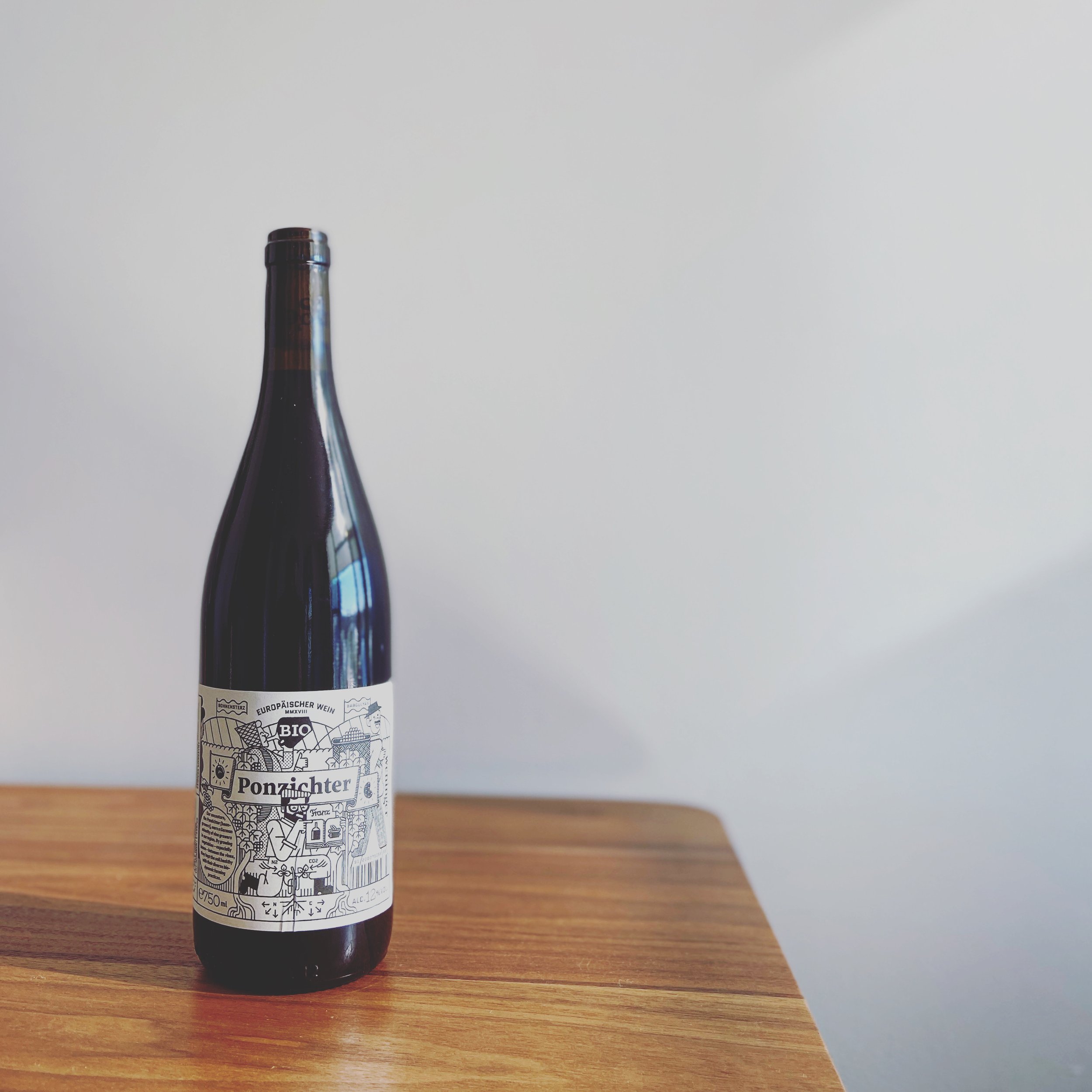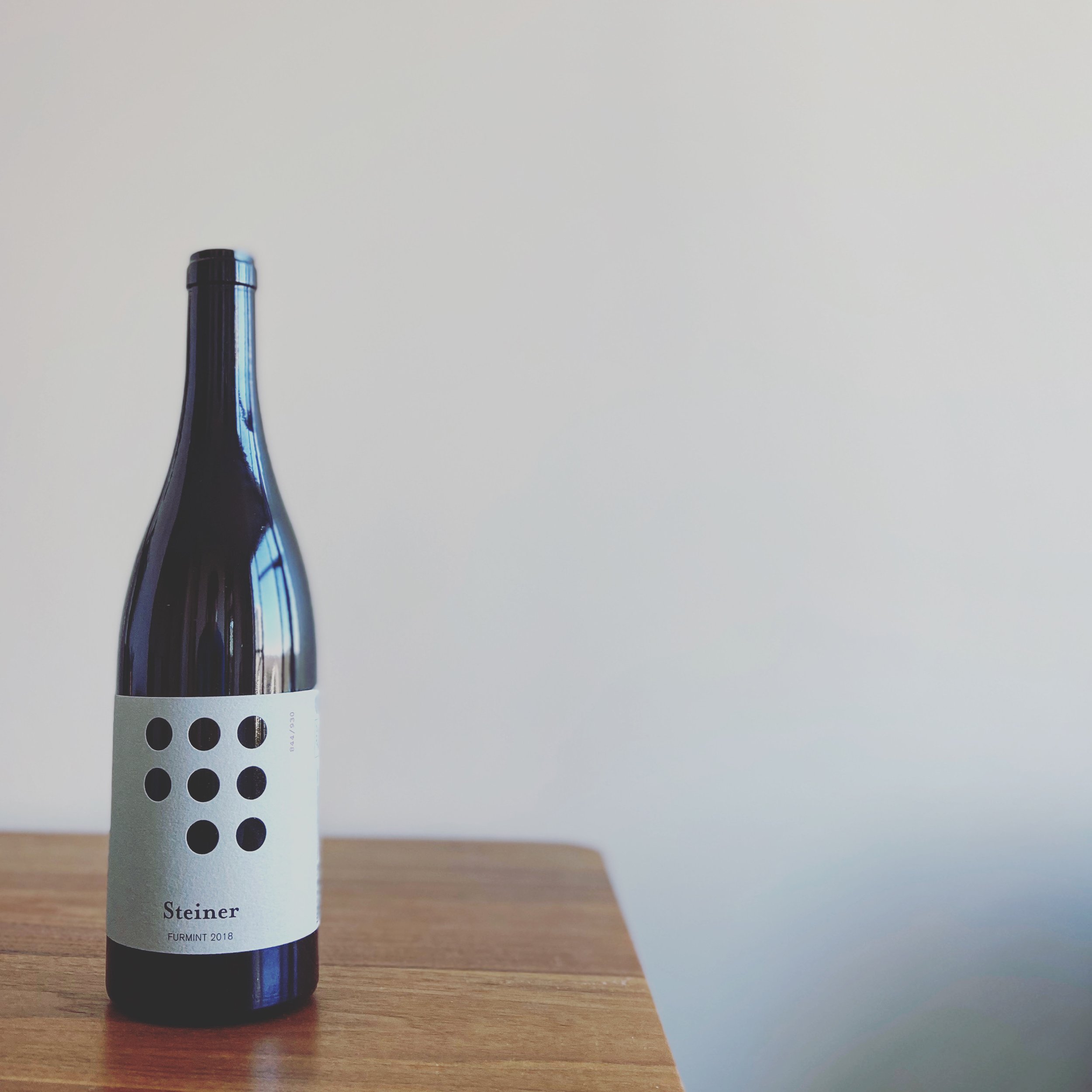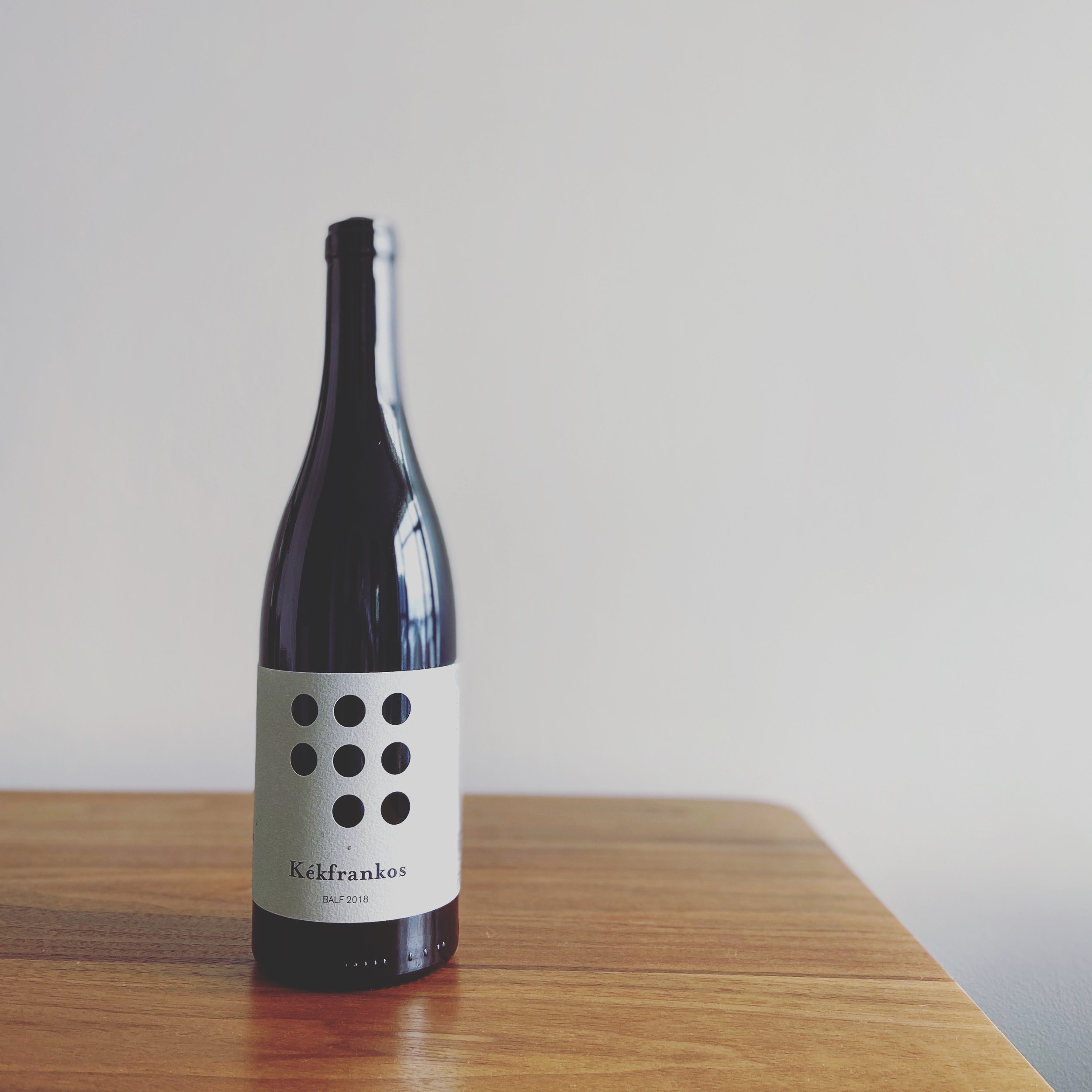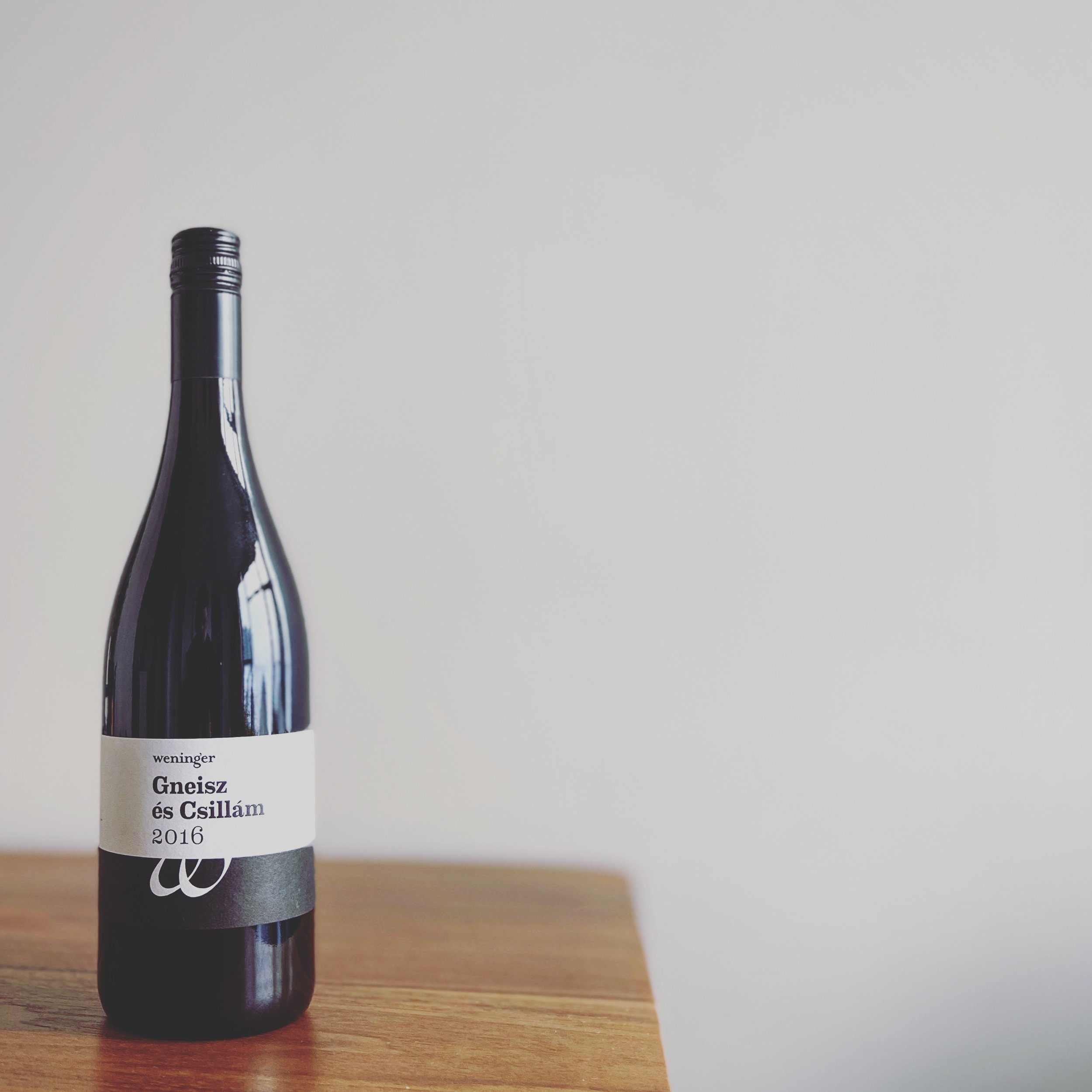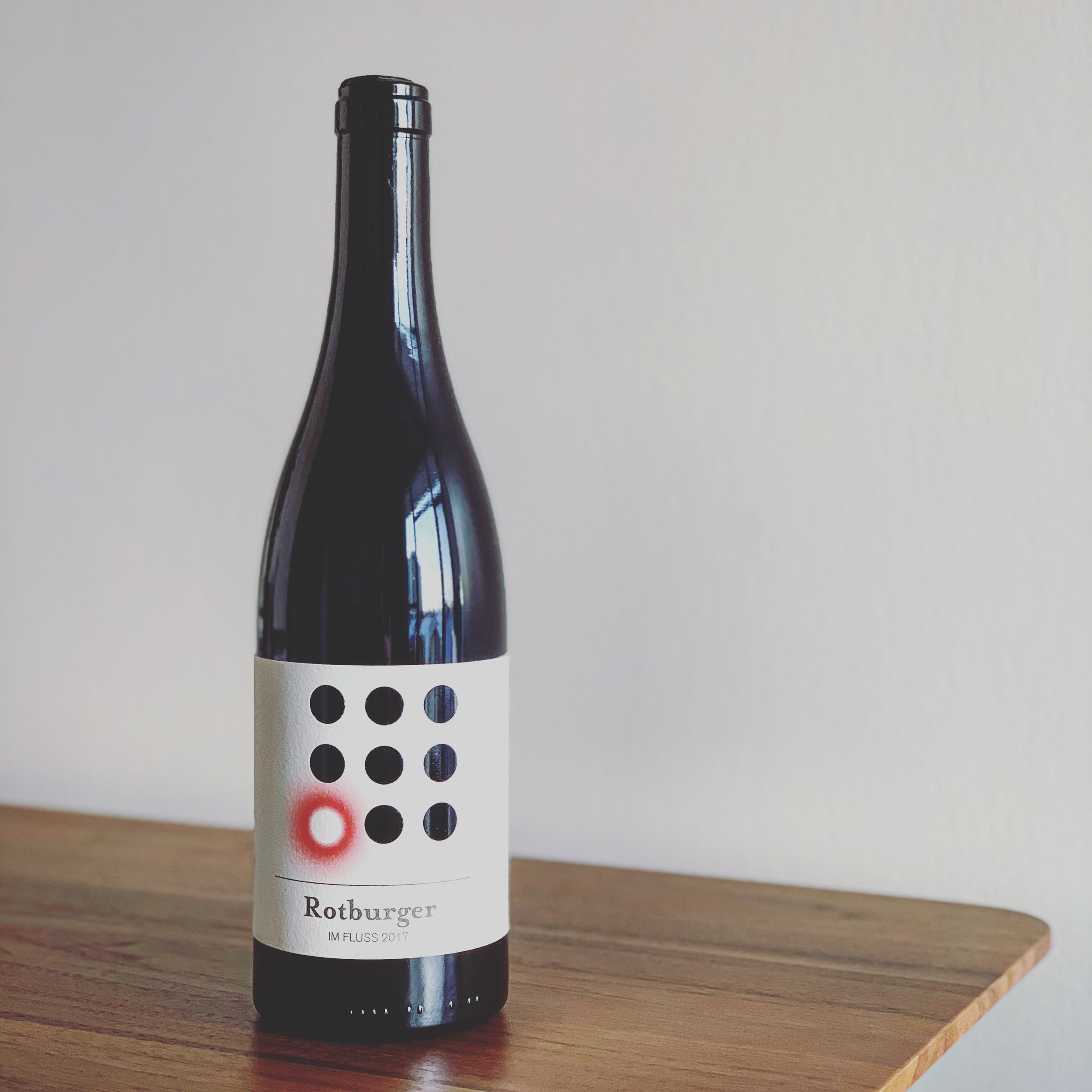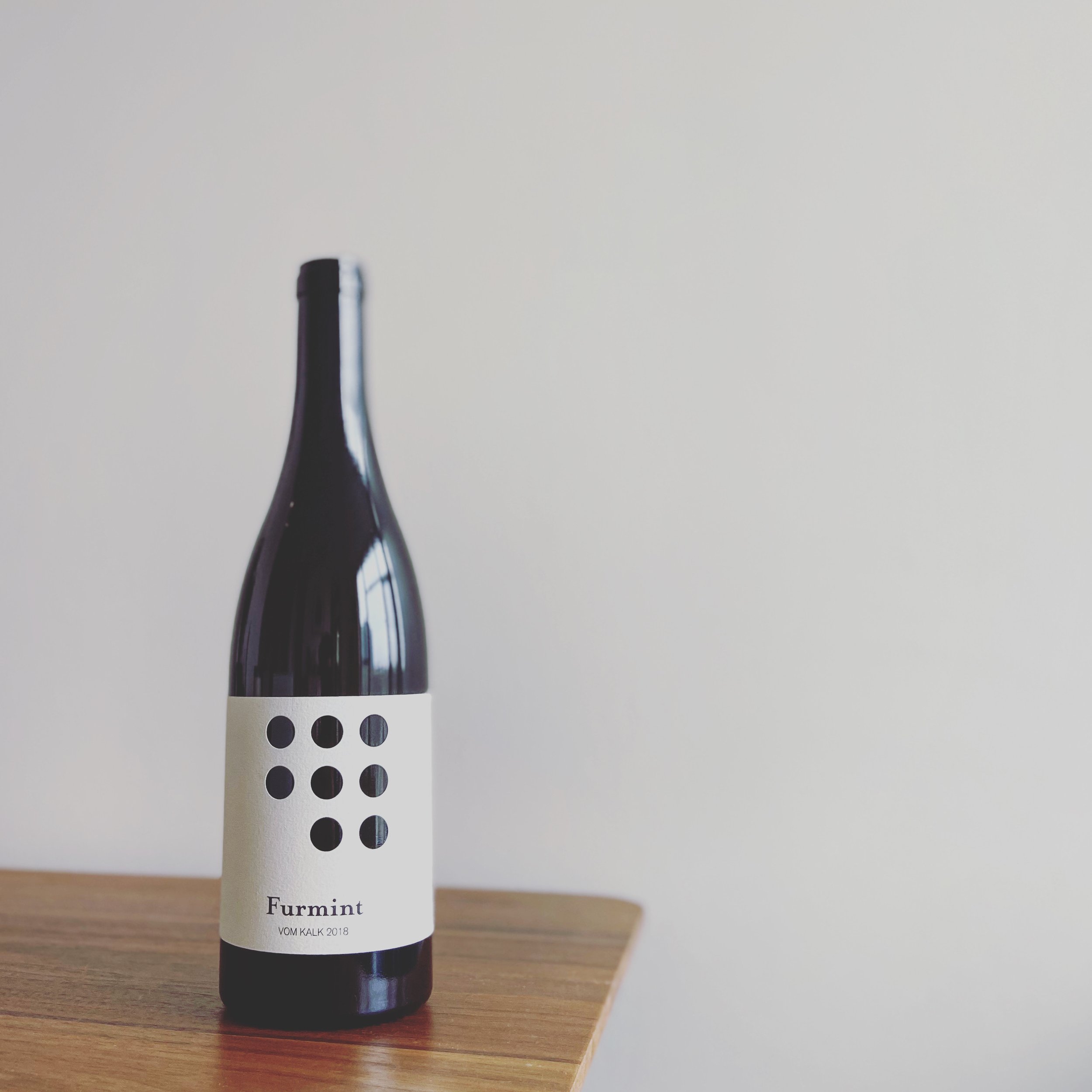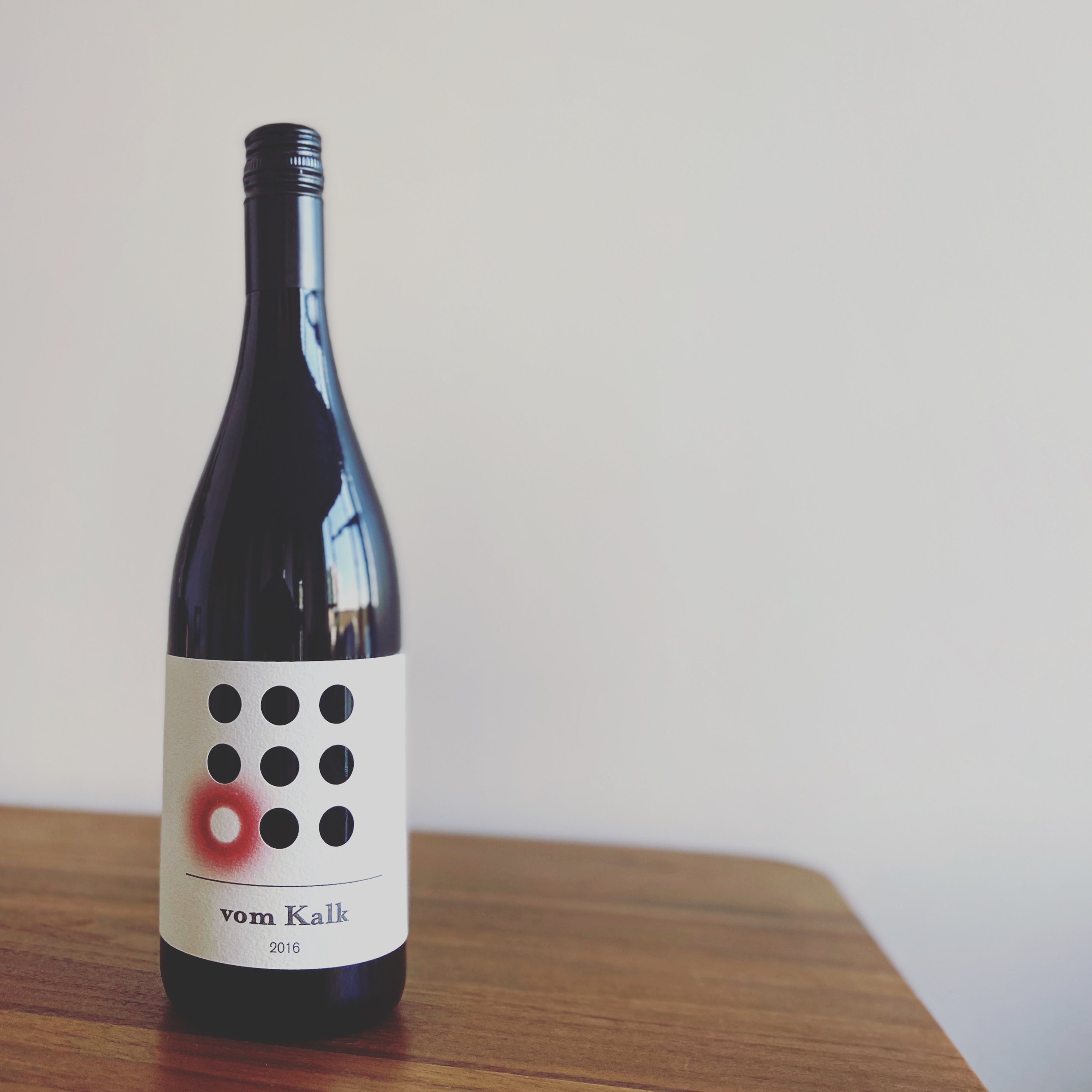FRANZ WENINGER
PAST WINES
2020 PONZICHTER
Ponzichter is the colloquial word for the German grape growing minority in Sopron - it means ‘bean grower’ since they’d often farm vegetables between the rows. The grapes (Pinot Noir and Zweigelt) are grown on Loam and Gneiss in both Austria and Hungary. The grapes were fermented in open-top vat, partly crushed and partly as whole berries. After 18 months in 40-year-old cask, the wine is bottled unfined and unfiltered with only 10ppm of sulphur. 12% ABV
2019 BALF KEKFRANKOS
This wine was created to show off the true nature of Kekfrankos from Hungary. Planted on well-draining slate and luvisol, these vines are twenty-two to fifty years old. The grapes are fermented in stainless steel vats on the skins for two weeks before being pressed off into neutral puncheons. Each barrel is treated to a different SO2 regime depending on the wine's needs. After fifteen months of élevage, the wine is bottled without fining. 12% ABV, TA 5.7 g/L, 10ppm SO2
2018 BLAUFRANKISCH
Franz’s entry-level Blaufrankisch comes from 30 diverse plots around Mittelburgenland. The richness of Loam is balanced by the freshness of Limestone and vice versa. The vines range from 5-35 years old. The grapes are destemmed into tank for ten days of fermentation on skins. It is then pressed off into neutral large-format barrels for an eighteen-month élevage. It is bottled unfiltered with 24ppm SO2. 12.5% ABV
2021 PINOT NOIR
The Frettner Vineyard is located in Sopron and features twenty year old vines planted on Luvisol, a soil formed by coniferous forests breaking down sedimentary rock. This area has been planted to Pinot Noir since the 16th century and was once prized and widely exported. This is Franz’s attempt to recapture some of that magic. The grapes are partially destemmed before being added to a large wooden tank for fermentation; two weeks later, the wine is pressed off into neutral puncheons. After a 21-month élevage, the wine is bottled unfiltered. Only 54 cases were produced. 12% ABV, 5.1 g/L TA
2019 SAYBRITZ BLAUFRANKISCH
It’s hard to say which vineyard is Franz’s favourite but I definitely see his eyes light up when he talks about how special Saybritz is. This parcel belongs to Franz’s Great Aunt and is their most northern site in Austria. The 50-year-old vines are deeply rooted in blue-green slate that lies under a top soil of calcareous clay. This combination results in perfect nutrient and water availability for the vines. The grapes, harvested on September 19th, were fermented in open-top wood tanks for nine days. The wine is then pressed into neutral barrel for a 35 month élevage. Only 75 cases were made this vintage. 13.5% ABV, 6.3 g/L TA, 10ppm SO2
2021 SAYBRITZ WELSCHRIESLING
2020 ROZSA PETROVITS
Franz’s sprightly grandmother is always the inspiration for this cuvée. When she was born in 1921, their hometown of Horitschon was part of Hungary; but by the end of the year, the town was part of Austria thanks to the volatile politics of the region. To celebrate her duality, Franz blended Sankt Laurent and Pinot Noir grown on limestone in Austria, with Syrah grown on Gneiss in Hungary. The vineyards are only a twenty minute drive from one another, but the terroirs are quite different. The grapes are whole cluster pressed into neutral puncheon where the juice ferments and ages for eight months on lees. It is bottled with minimal sulphur.
2019 FURMINT STEINER
Steiner Vineyard has been called western Hungary’s grand-cru since the 15th Century. This east facing site features primary mica schist and gneiss dragged across Austria from the alps by glacial migrations. This site is warm and dry, but low yielding due to extremely low levels of soil nutrients. The grapes were destemmed and pressed into large barrel. After several months on lees and malolactic conversion the wine is racked, sulphured, and bottled. Only 75 cases produced. 12% ABV, 6.2 g/l TA.
2019 FURMINT VOM KALK
Franz has taken on the lofty goal of returning Furmint to its homeland: Burgenland, Austria. Many of the sites now planted to international varieties were once planted with Furmint, and according to Franz’s research it was once revered. After grafting over old vines, and planting new vineyards in fallow but historic sites, his work really begins. This cuvée comes from Kalkofen Vineyard in Ritzing. It is planted on limestone, once used in lime kilns. The grapes were destemmed and pressed into large barrel. After several months on lees and malolactic conversion the wine is racked, sulphured, and bottled. Only 134 cases produced. 11.5% ABV, 8 g/l TA
2020 SZÜRKE ÉS FEHÉR
In 1999 Franz planted what he though was Pinot Noir in a particularly chalky plot in his Frettner Vineyard. Fortunately for us, there was a mix-up at the nursery and Pinot Blanc and Pinot Gris were planted in half the vineyard instead. The grapes were harvested in September, and fermented in open- top tank for twelve days before being pressed off into neutral barrel for élevage. Only 10ppm of sulphur were added before bottling, unfined and unfiltered. 100 cases were made this vintage. 12% ABV
2017 KALK & STAUB
In 2016 Franz made a pet-nat from Pinot Noir to huge acclaim. When he tried to recreate the experiment in 2017 the fermentation halted leaving him with a sweet rosé. Not sure what to do with the wine he tucked it away in the cellar. Three years later the sugar had finally fermented out resulting in a modestly bubbly wine that spent thirty-six months on lees. No sulphur was added and only fifty cases were produced. 11.5% ABV
2017 STEINER KEKFRANKOS
The Steiner site is the king of Hungarian Vineyards. It overlooks the lake, is planted on pure Gneiss and Mica Schist, and contains forty-eight-year-old vines. It’s no wonder the Church once held onto this vineyard will all their might. It is farmed at a ludicrously low 21/hl per hectare. The grapes are destemmed and fermented on the skins for three weeks before being pressed off into neutral barrels. Each barrel is monitored independently for Sulphur levels, only receiving an addition if necessary. The wine is bottle without any fining nor filtration. 12% ABV
2018 BALF KEKFRANKOS
This wine was created to show off the true nature of Kekfrankos from Hungary. Planted on well drained Gneiss and Mica Schists, these vines are seventeen to forty-five years old. The grapes are fermented in stainless steel vats on the skins for three weeks before being pressed off into neutral puncheons. Each barrel is treated to a different Sulphur regime depending on the wines needs. After a year or so of élevage, the wine is bottled without fining. 13% ABV
2018 STEINER FURMINT
Steiner Vineyard has been called western Hungary’s grand-cru since the 15th Century. This east facing site features primary mica schist and gneiss dragged across Austria from the alps by glacial migrations. This site is warm and dry, but low yielding due to extremely low levels of soil nutrients. The grapes were destemmed and pressed into large barrel. After several months on lees and malolactic conversion the wine is racked, sulphured, and bottled.
2018 SAYBRITZ BLAUFRANKISCH
It’s hard to say which vineyard is Franz’s favourite but I definitely see his eyes light up when he talks about how special Saybritz is. This parcel belongs to Franz’s Great Aunt and is their most northern site in Austria. The 45-year-old vines are deeply rooted in blue-green slate that lies under a top soil of calcareous clay. This combination results in perfect nutrient and water availability for the vines. The grapes were mostly destemmed and fermented in open-top wood tanks. After a moderate maceration the wine is pressed off into neutral barrel for élevage. Only 158 cases made this vintage. 12.5% ABV
2017 HOCHACKER BLAUFRANKISCH
This cuvée comes from the oldest vines around Franz’s home village, Horitschon. The soils here are chalybeate clay right to the surface, with a high concentration of iron. This combination results in Franz’s chunkiest wine, broad shoulders and rustic tannins. The grapes are destemmed into large open-top foudres for fermentation. After three weeks on the skins, the wine is pressed off into neutral large format barrels for a sixteen-month élevage. The wine is bottled unfined, unfiltered, with a pinch of Sulphur. We only import this wine in magnum.
2019 GLIMMER OF HOPS
Franz noticed wild hops had established themselves against one of his fences. He decided to add these unprocessed hops to an amphora of Blaufrankisch rosé. After a maceration period it is racked off the hops and bottled in 500ml beer bottles. The goal is to incorporate more elements from his farm into the wines to better represent the actual terroir.
2005 KIRCHHOLZ BLAUFRANKISCH
Back in the early 2000s, Franz was experimenting with closures to combar the recent increase in cork taint. He aged a percentage of his wines under screw cap to see how they’re fare, but thanks in part to his vines struggling through organic conversion, the reductive characteristics were unpleasantly noticeable without subtle oxygen ingress. After fifteen years in the cellar, these wines have finally come into their own. We will receive four cases of the 2005 vintage bottled under screw cap. This single vineyard Blaufrankisch comes from one of Franz’s most prized sites. A half meter thick layer of well- draining sandy gravel separates the vines from the loam and clay subsoil. This combination provides the perfect hydrology for supreme quality grapes and as such, Franz has vinified and bottled this wine separately since 2003. The vines are between 45 and 80 years old. The grapes are fermented in foudre for two weeks before being pressed off into neutral puncheons for twenty-two months.
2016 GNEISZ ÉS CSILLÁM
Franz wanted to make a cuvée that shows the unique soil types of Sópron: Gneiss and Mica Schist. He took biodynamically grown Syrah, Zweigelt, Kekfrankos, and Merlot and blended them together to accurately capture this terroir. The grapes are destemmed and fermented in stainless steel. Élevage was carried out in large oak foudres for over a year before racking and bottling. The final wine has 51ppm of Sulphur. 13.3% ABV
2017 KALKOFEN BLAUFRANKISCH
This incredibly unique site represents the western most point in central-Burgenland. At 350m above sea level, it is their coldest parcel. Kalkofen was once used to produce quick lime thanks to its calcareous Eurendsina soils. Because of the sites ability to retain acidity, and its relatively cool mesoclimate, the grapes can be harvested quite late. They were de-stemmed into open top wooden vat and fermented on skins for two weeks. The wine was then pressed off into puncheon for nearly two years.
2017 ROTBURGER IM FLUSS
The Zweigelt for this cuvée comes from the Gfanger Vineyard outside Horitschoner. Soils here are mostly sandy loam (several meters deep) and the vines are 20-25 years old. This year Franz changed things up. Realizing this vineyard is probably not going to give him the complexity he wants, he opted to go full carbonic maceration in stainless steel. No oak, very little oxygen, full stems; definitely a nod to glou glou wine. 12% ABV
2018 FURMINT VOM KALK
Franz has taken on the lofty goal of returning Furmint to its homeland: Burgenland in Austria. Many of the sites now planted to international varieties were once planted with Furmint, and according to Franz’s research it was once revered. After grafting over old vines, and planting new vineyards in fallow but historic sites, he’s finally obtained his first vintage. The grapes were destemmed and pressed into large barrel. After several months on lees and malolactic conversion the wine is racked, sulphured, and bottled. 9.5% ABV
2017 STEINER KEKFRANKOS
The Steiner site is the king of Hungarian Vineyards. It overlooks the lake, is planted on pure Gneiss and Mica Schist, and contains fifty-year-old vines. It’s no wonder the Church once held onto this vineyard with all their might. It is farmed at a ludicrously low 21/hl per hectare. The grapes are destemmed and fermented on the skins for three weeks before being pressed off into neutral barrels. Each barrel is monitored independently for Sulphur levels, only receiving an addition if necessary. The wine is bottle without any fining nor filtration.
2016 VOM KALK
Franz has done away with his entry level Austrian cuvée and replaced it with a series of soil specific bottlings. This particular rendition features Merlot, Cabernet Sauvignon, and Sankt Laurent planted on chalk around the southern end of the Neusiedlersee. The grapes were destemmed and fermented in cement tanks. After 17 days, the wine was pressed off into a combination of neutral puncheons and concrete. 13.5% ABV
2017-18 RÓZSA PETSOVITS
Franz’s sprightly grandmother is always the inspiration for this cuvée. When she was born in 1921, their hometown of Horitschon was part of Hungary; but by the end of the year, the town was part of Austria thanks to the volatile politics of the region. To celebrate her duality, Franz blended Sankt Laurent and Pinot Noir grown on limestone in Austria, with Syrah grown on Gneiss in Hungary. The vineyards are only a twenty minute drive from one another, but the terroirs are quite different. The grapes are whole cluster pressed into neutral puncheon where the juice ferments and ages for eight months on lees. It is bottled with minimal sulphur.
2018 GLIMMER OF HOPS
Franz noticed wild hops had established themselves against one of his fences. He decided to add these unprocessed hops to an amphora of Blaufrankisch rosé. After a maceration period it is racked off the hops and bottled in 500ml beer bottles. The goal is to incorporate more elements from his farm into the wines to better represent the actual terroir.
2015-16 KIRCHHOLZ BLAUFRANKISCH
This incredibly unique site represents the western most point in central-Burgenland. At 350m above sea level, it is their coldest parcel. Kalkofen was once used to produce quick lime thanks to its calcareous Eurendsina soils. Because of the sites ability to retain acidity, and its relatively cool mesoclimate, the grapes can be harvested quite late. They were de-stemmed into open top wooden vat and fermented on skins for two weeks. The wine was then pressed off into puncheon for nearly two years. Only 215 cases produced from arguably the best vineyard in Burgenland. 14.3% ABV
2016-17 SAYBRITZ BLAUFRANKISCH
It’s hard to say which vineyard is Franz’s favourite but I definitely see his eyes light up when he talks about how special Saybritz is. This parcel belongs to Franz’s Great Aunt and is their most northern site in Austria. The 45-year-old vines are deeply rooted in blue-green slate that lies under a top-soil of calcareous clay. This combination results in perfect nutrient and water availability for the vines. The grapes were mostly destemmed and fermented in open-top wood tanks. After a moderate maceration the wine is pressed off into neutral barrel for élevage.
2016-19 SAYBRITZ welschriesling
2019 SZÜRKE ÉS FEHÉR
Description from Franz: When we planted the Frettner vineyard back in 1999, we ordered Pinot Noir for the chalky higher part of the vineyard. But three years later we discovered that we had received half Pinot Blanc and ten percent Pinot Gris vines. In 2018, we decided to give our Pinot Gris (Szürkebarát - „Grey Monk“ called in Hungarian) more space. Thus we fermented Pinot Gris and Pinot Blanc on the skins, and this is the result.
2016-17 FEHERBURGUNDI
Twenty years ago, Franz planted what he thought was Pinot Noir in the Frettner Vineyard in Sópron; turns out, the vine-nursery mislabeled the vines and now we have a premium site planted to Pinot Blanc. The slate soils and relatively low yields result in concentrated grapes with good extract. The wine is wild fermented in neutral puncheons and rests on fine lees for a year before bottling with 56ppm of Sulphur.
2016 HOCHACKER BLAUFRANKISCH
This cuvée comes from the oldest vines around Franz’s home village, Horitschon. The soils here are chalybeate clay right to the surface, with a high concentration of iron. The grapes are destemmed into large open-top foudres for fermentation. After three weeks on the skins, the wine is pressed off into neutral large format barrels for a sixteen-month élevage. The wine is bottled unfined, unfiltered, and with 12ppm of Sulphur.
2013-15 STEINER KEKFRANKOS
The Steiner site is the king of Hungarian Vineyards. It overlooks the lake, is planted on pure Gneiss and Mica Schist, and contains forty-eight-year-old vines. It’s no wonder the Church once held onto this vineyard will all their might. It is farmed at a ludicrously low 21/hl per hectare. The grapes are destemmed and fermented on the skins for three weeks before being pressed off into neutral barrels. Each barrel is monitored independently for Sulphur levels, only receiving an addition if necessary. The wine is bottle without any fining nor filtration.
2015 GNEISZ ÉS CSILLÁM
Franz wanted to make a cuvée that shows the unique soil types of Sópron: Gneiss and Mica Schist. He took biodynamically grown Syrah, Zweigelt, Kekfrankos, and Merlot and blended them together to accurately capture this terroir. The grapes are destemmed and fermented in stainless steel. Élevage was carried out in large oak foudres for over a year before racking and bottling. The final wine has 51ppm of Sulphur. 13.32% ABV
2015 KALKOFEN BLAUFRANKISCH
This incredibly unique site represents the western most point in central-Burgenland. At 350m above sea level, it is their coldest parcel. Kalkofen was once used to produce quick lime thanks to its calcareous Eurendsina soils. Because of the sites ability to retain acidity, and its relatively cool mesoclimate, the grapes can be harvested quite late. They were de-stemmed into open top wooden vat and fermented on skins for two weeks. The wine was then pressed off into puncheon for nearly two years. Only 215 cases produced from arguably the best vineyard in Burgenland. 14.3% ABV .
2016-17 BALF KEKFRANKOS
This wine was created to show off the true nature of Kekfrankos from Hungary. Planted on well drained Gneiss and Mica Schists, these vines are seventeen to forty-five years old. The grapes are fermented in stainless steel vats on the skins for three weeks before being pressed off into neutral puncheons. Each barrel is treated to a different Sulphur regime depending on the wines needs. After a year or so of élevage, the wine is bottled without fining.
2015 HORITSCHONER ZWEIGELT
The Zweigelt for this cuvée comes from the Gfanger Vineyard outside Horitschoner. Soils here are mostly sandy loam (several meters deep) and the vines are 20-25 years old. The grapes are fermented in stainless steel vats where they spend ten days on the skins before being pressed off into large oak. The wine is bottled with 32ppm of Sulphur.
2016 PLUTZER
This wine is a one-off experiment Franz decided to conduct. He decided to co-ferment the juice from a field-blend of Welschriesling, Gruner Veltliner, and Sauvignon Blanc in a locally made amphora (known as a Plutzer). The wine was left on lees for a year and a half before being racked to bottle. It spent an additional two years aging before release.
2015 VOM KALK
This year, Franz has done away with his entry level Austrian cuvée and replaced it with a series of soil specific bottlings. This particular rendition features Merlot, Cabernet Sauvignon, and Sankt Laurent planted on chalk around the southern end of the Neusiedlersee. The grapes were destemmed and fermented in cement tanks. After 17 days, the wine was pressed off into a combination of neutral puncheons and concrete.
2002 VERATINA
This particular late release was made by Franz’s father. The cuvée is made up of Blaufrankisch (50%), Zweigelt (25%), Merlot (20%), and Cabernet Sauvignon (5%). Like many producers in the area at the time, Franz’s father was keen to prove he could make international style blends like the best of them. The vines were 15-35 years-old at this point, are were well-rooted into hard clay. The grapes were destemmed and fermented in open-top foudres for twenty days. The wine went through Malolactic Conversion and élevage in French oak barriques (some of which were new).
2014 SOPRON
This wine is a blend of Merlot, Syrah, and Cabernet Sauvignon from biodynamically farmed vines in their Hungarian vineyards. Soils here are Gneiss and Mica Schists which help retain heat and offer exceptional drainage. The vineyards mostly face east and are constantly dried by the Pannonian winds that sweep over the lake one-hundred meters below. The grapes were destemmed into stainless steel where the wine fermented. The wine is then racked off into neutral oak tanks for twelve months. 25ppm of Sulphur is added before bottling.
2014 FRANZ
This wine is a blend of Blaufrankisch, Merlot, and Zweigelt from around the town of Horitschon just south of the Neusiedlersee in Bugenland. Soils here are mostly composed of alluvial sediment and clay; it retains moisture and keeps the vines cool yielding lighter wines. The grapes were destemmed into stainless steel where the wine fermented. The wine is then racked off into neutral oak tanks for fourteen months. 28ppm of Sulphur is added before bottling.

